Barcelona’s Climate Shelters project The challenge of communicating unwelcome messages on climate change
Understand your potential audience’s perceptions and attitudes toward climate change
Almost nine in ten respondents in Spain see climate change as a ‘very serious’ problem (89%), an increase of three percentage points since 2017, significantly above the EU average of 79%. Moreover, the proportion who see climate change as the most serious global problem has increased five % since 2017 to 18% (vs the EU average of 23%). In addition, respondents in Spain are more likely to agree that more public financial support should be given to the transition to clean energies (90% vs the EU average of 84%, an increase of five %), and that adapting to the adverse impacts of climate change can have positive outcomes for citizens (82% vs the EU average of 70%) [1].
Image 1. Adaptation to the impacts of climate change can have positive outcome for citizens in the European Union (%). Inner and outer pies refer to Spain and European Union respectively.

Set clear and measurable goals and agree on the values to be communicated
The Climate Shelters project has defined a number of goals[2] in support of climate change communication:
- Goal 1. Transmitting the need to adopt climate change adaptation measures
- Goal 2. Informing local residents about the school’s function as a new “climate shelter” facility
- Goal 3. Involving and raising the awareness of schools and the education community in the fight against climate change
- Goal 4. Publishing and promoting the scientific and technical work associated with the project and the fight against climate change
In terms of the values to be communicated, they refer to: innovation, replicability, participation, adapting to climate change, learning, involvement and climate awareness[3].
Bring climate change close to home
For the wider public, messaging should be based on an assessment of places and resources people value and how climate affects them [4]. Furthermore, the message needs to be clear, definitive and memorable. It should avoid many numbers and focus on the impacts and the challenges. The message of the Climate Shelters Project reads as:
Climate change is happening now and is having an effect on people's health and quality of life. Barcelona is faced with the challenge of having to combat high temperatures which, according to climate forecasts, will have an impact on the city due to the effects of climate change.[5]
The message may be supported with additional – localized – information which need to introduce simple scientific terminology (heat island effect) and also pinpoint a policy gap or priority (adapt infrastructures, equipment and public spaces to heat):
Being a compact city of 1.6 million inhabitants with hot and humid climate in summer, Barcelona is particularly exposed to the heat island effect, while at the same time experiences a low degree of adaptation to heat of many infrastructures, equipment and public spaces. [6]
Furthermore information on climate change impacts in the future are supportive for understanding that the problem is not a short term one but will last, with increasing strength, for several decades to come:
Climate predictions foresee heat waves phenomena to get stronger, longer and more recurrent. In the future, the city will experience 30 additional warm days above 30oC per year and an increase of extreme temperature by 3.5 °C up to 42.8 °C [7]
IT IS RECOMMENDED TO AVOID THE USE OF FAR distant dates to describe climate change impacts. This is because people tend to view climate change as a distant problem that will impact future generations ONLY, a fact which may result in inertia and apathy. In addition, it is important to avoid such expressions as “hundred-year heat wave or flood”, as they may shape an understanding that the chances for such an event to take place are minimal.
Connect climate change to the project and emphasize on solutions and benefits using content frames
Climate change communication is more successful when it is connected to a project by using content frames, i.e. describing who, what, why, and how. Content frames are more effective if they highlight how local scale climate solutions connect to local-scale impacts. According to the Climate Shelters project:
Barcelona’s answer to overheating includes an innovative pilot project to adapt schools to Climate Change, with the aim to develop a network of eleven Climate Shelters around the city. Climate shelters are areas within schools (practically their school yards) which by hosting blue, green and grey technical measures support the adaptation of the city to climate change. At the same time, the exposure of the school population to urban heat is ameliorated, whereas the possibility for the continuous use of the climate shelters by the wider public in non-school periods and throughout the year, is provided.”[8]
It is important to support the above content frame by emphasizing on the solutions to be applied. As an example, Image 2 refers to the technical solutions to be applied in school Els Llores (from a report of the City of Barcelona on the designed solutions for the 11 selected schools)[9];
Image 2. Solutions to be implemented in Els Llores School. 1: construction of new pergola; 2: modification of fountain; 3: reduction of existing sport yard; 4: creation of a garden 5: construction of a new pergola; 6: water games; 7: green reinforcement of fence; 8: fountain.
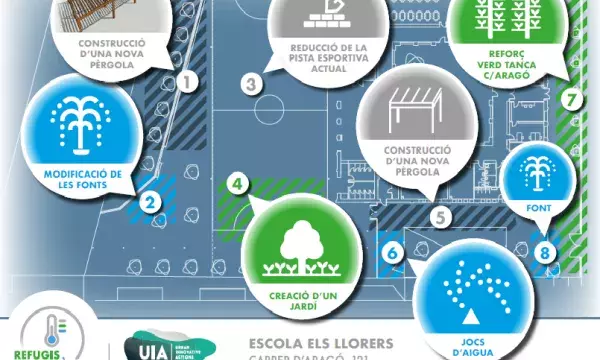
The above message may be further enhanced in details, for instance by referring to the reasoning, from a climate and environmental point of view, for selecting the schools. Image 3 presents preparatory work so as to select the schools to be converted to climate shelters on the basis of such criteria as air temperature and air pollution[10].
Image 3. Background environmental and climatic information for selected schools (left: Cervantes; middle: Els Llorel; right: Ramon Casas).
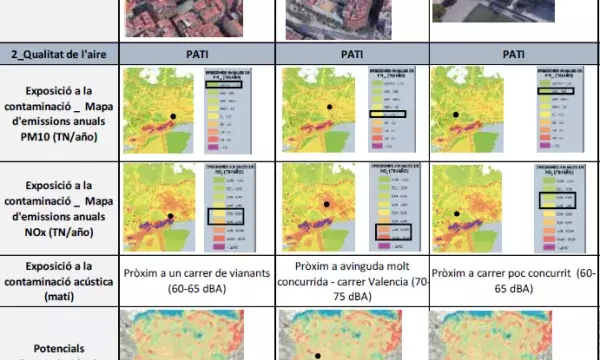
Differentiating according to audience
In contrast to ‘one size fits all’ large-scale public information campaigns that may prove short in reaching the audience, communication in facilitated small group settings has proved effective in generating behavioural change. One way to do this is through participatory processes, involving representatives of all relevant parties, including schools and the local communities. The Climate Shelters project has applied this approach in developing the technical measures and solutions for converting the selected schools to Climate Shelters. Through participatory games, mapping exercises, and discussions (both in person and virtually), community members generated ideas for possible solutions to be promoted in each school, prior to and during a heat wave event.
Link the project to the overall communication plan of the city
The Climate Shelters project is closely aligned to the communication plan of the City of Barcelona as far as climate change is concerned[11]. This is important so that citizens realize the complementarity of actions under a main city policy ambition. Furthermore, the project is closely aligned to the Sustainable Schools project and appears regularly into the newsletter of Sustainable Schools[12], whereas links between the Climate Shelters project and other projects within the City Council, such as the one entitled “Protect the Schools”[13] are also promoted.
Integrate local players in the communication campaign
Schools participating in the Climate Shelters project have shared news about the project and actions being performed at their schools, helping with the communication within their districts[14] [15]. This is very important, as communication channels are expanded and more audiences are approached. Furthermore, other players are also involved, for instance a publication of the construction works of the Climate Shelters project has been hosted in the newsletter of the Association of the Observatory of Barcelona for the architectural rehabilitation[16].
Show people and pictorial elements, not charts and graphs – avoid too many numbers
It is usual to use charts and line graphs to communicate climate change. However, such visualization means require knowledge so as to be read effectively, not to mention that are hardly memorable. On the contrary, images of people cooperating and interacting (Image 4 ), help images to be attractive and memorable. The same holds for pictorial elements (Image 5).
Image 4. Participatory process for students and teachers.
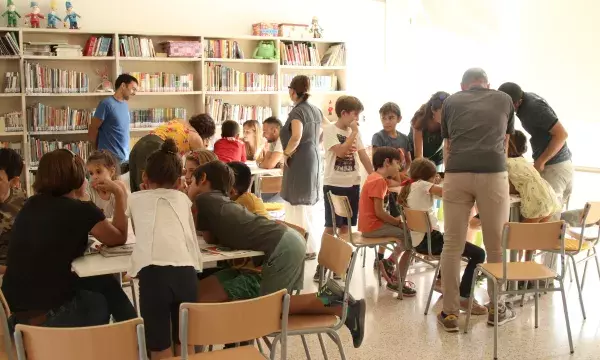
Image 5. Pictorial element of a greening solution in the Climate Shelters project.
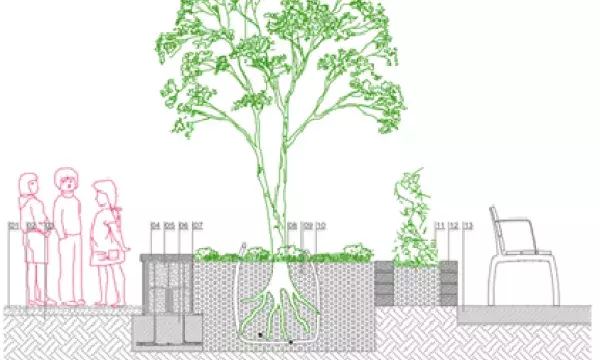
Finally, several projects on climate change tend to provide tons of numbers on scenarios and (climate and economic) impacts, a fact which may easily distract or even confuse the recipient. It is recommended that few numbers are given, mostly related to the main links of the project to climate change as well as to the main results of the solutions promoted for adapting to climate change.
For example, the Climate Shelters project provides the following set of numerical information:
In terms of climate change impacts: “Barcelona will experience 30 additional warm days above 30 °C per year and an increase of extreme temperatures by 3.5 °C up to 42.8 °C”
In terms of the benefits stemming from solutions to be applied: 4500 kids will benefit from the pilot investments to be made for the conversion of their schools to climate shelters, 3000 m2 of schoolyards will be transformed and 4500 m2 of urban green will be added.
Keep the message alive – Communicating climate change during and after the covid-19 crisis
A strong communication plan is the one that stays alive even during periods where public attention has been diverted as is the case for the covid-19 crisis. To this end, the communication team of the Climate Shelters project took care for a publication which informs the public that “The climate shelter project does not stop”[17].
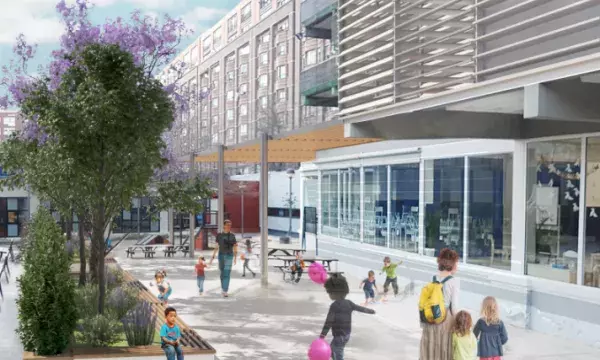
The introductory message in the publication is strong and to the point:
Despite the closure of schools due to Covid-19, the project has continued its course with new participatory sessions and the drafting of executive projects to adapt the eleven participating schools to climate change.
The publication also provided specific details on the actions promoted during the covid-19 crisis (March – May) as well as on those to follow in the next months. This is important to keep your audience alert and sustain their interest.
Finally, on the occasion of the publication, the communication team took the advantage to refresh the message on the project by providing brief information on its aims and progress, also highlighting the emphasis given by the project to participatory processes.
In terms of the post covid-19 period (or any other event of major consideration and/or impact), it is strongly needed to re-adjust the communication plan so as to capture any changes to the perceptions of the people. An important finding to this direction stems from a world-wide survey[18] which explores the perceptions of 28,039 people (ages 16-74) from 14 countries on the links between covid-19 and climate change.
It is interesting to note that 73% of the respondents from Spain agree that in the long term, climate change is a crisis as serious as Covid-19, whereas 62% consider that it is important that government actions prioritize climate change in the economic recovery after Covid-19.
The above reflect a positive indication for the re-iteration of the communication plan, closely aligned to its original goals with emphasis given to the perception of people on climate change, namely that it is considered as a major crisis.
REFERENCES
[1] Special Eurobarometer 490, Climate Change, April 2019.
[2] Communication Plan, Climate Shelters Project, Ajuntament de Barcelona, 2019
[3] As footnote 2
[4] https://wg1.ipcc.ch/docs/Climate-Outreach-IPCC-communications-handbook.pdf
[5] https://www.barcelona.cat/barcelona-pel-clima/en/climate-shelters-schools
[6] https://www.uia-initiative.eu/en/uia-cities/barcelona-call3
[7] https://www.uia-initiative.eu/en/news/barcelonas-pilot-project-beat-heat-0
[8] As in footnote 5
[9] REFUGIS CLIMÀTICS - transformem les escoles per adaptar-nos als efectes de la calor, Report. Ajuntament de Barcelona, 2020.
[10] Adaptant escoles al Canvi Climatic a traves del verd, el blau I el gris, Analisi de les escoles, Agencia d’ Energia de Barcelona, September 2019. https://www.sostenible.cat/article/comenca-el-projecte-refugis-climatics-a-lescola-cervantes-de-barcelona
[11]https://www.barcelona.cat/barcelona-pel-clima/sites/default/files/documents/pla_clima_cat_maig_ok.pdf
[12] https://www.barcelona.cat/barcelonasostenible/ca/escoles-sostenibles/bulleti/563
[13] https://ajuntament.barcelona.cat/ecologiaurbana/ca/que-fem-i-per-que/urbanisme-per-als-barris/protegim-escoles
[14] https://agora.xtec.cat/escolacervantes/general/com-podem-convertir-la-nostra-escola-en-un-refugi-climatic/ and
[15] https://agora.xtec.cat/ceipramoncasas/inici/video-sessio-participativa-refugis-climatics-escola/
[16] https://www.obrabcn.cat/newsletter
[17] https://www.barcelona.cat/barcelonasostenible/ca/escoles-sostenibles/bulleti/583/el-projecte-de-refugis-climatics-no-satura
[18] IPSOS-MORI, 16-19/4/2020
For further information regarding the Climate Shelters project, you may visit https://www.barcelona.cat/barcelona-pel-clima/en/climate-shelters-schools
About this resource
The Urban Innovative Actions (UIA) is a European Union initiative that provided funding to urban areas across Europe to test new and unproven solutions to urban challenges. The initiative had a total ERDF budget of €372 million for 2014-2020.
Similar content




